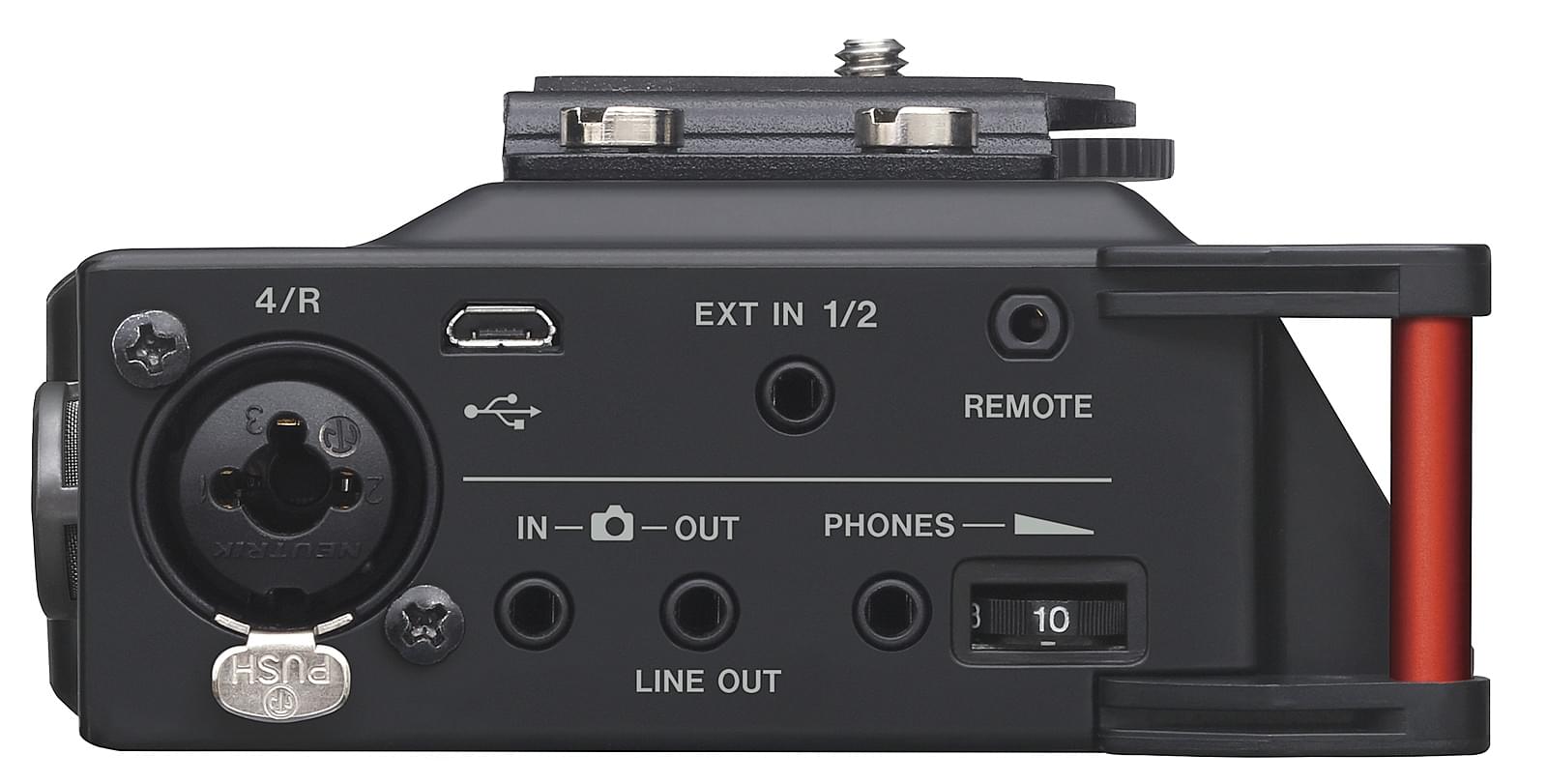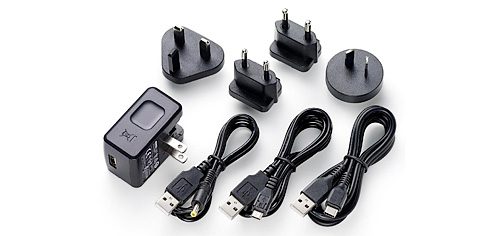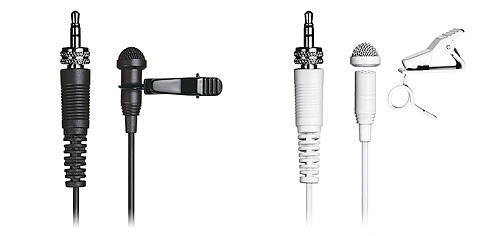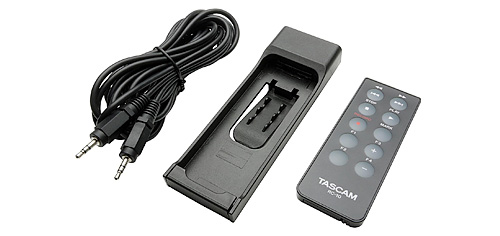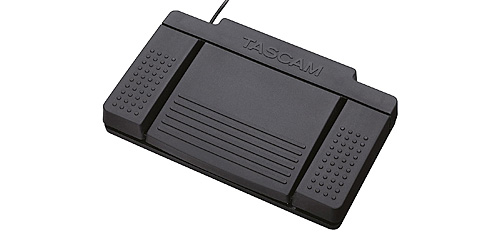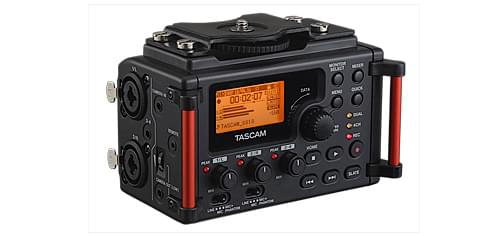DR-70D
4-channel audio recorder for DSLR cameras

TASCAM DR-70D
Our DR-70D for DSLR cameras received the top award for 2023 in the Audio Recorder/Adapter category from the UK's Pro Moviemaker magazine.
See the overview of all winners in this PDF
The DR-70D is a compact audio recorder that allows the aspiring DSLR user to create audio recordings in very high quality in parallel to their film or video shots. The recorder can be mounted directly between a tripod and the camera or on top of the camera, resulting in a compact package.
With its two built-in microphones, the DR-70D is instantly ready for use in standard situations. In addition, it provides four XLR/TRS combo jacks which can be used to record four channels of audio with excellent sound quality using professional microphones. Thanks to a camera output the recorder’s stereo signal can be recorded also on the camera to ease subsequent editing of the material in combination with the slate tone function of the recorder. On the other hand you can use the camera input to monitor the audio of the camera using the recorder.
Features of the DR-70D include overload-resistant, great-sounding preamps with switchable low-cut filter and limiter, handling of microphone signals in mid/side format, 24- or 48-volts phantom power for condenser mics, as well as many common and not so common functions that facilitate capturing, monitoring and subsequent processing of the audio tracks.
Two built-in microphones
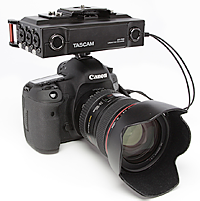 The two omnidirectional microphones allow you to easily record natural stereo sound with just this unit. Used together with small shotgun mics, you can even record audio from people speaking in an interview and the ambient sound at the same time (on different tracks), for example, with a compact set up.
The two omnidirectional microphones allow you to easily record natural stereo sound with just this unit. Used together with small shotgun mics, you can even record audio from people speaking in an interview and the ambient sound at the same time (on different tracks), for example, with a compact set up.
4 XLR/TRS combo jacks allow a wide range of setups
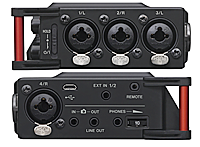 The four-channel design enables use of two shotgun mics and the stereo mic to record ambiance and each speaker individually. Since channels 1 and 2 can be set to the stereo input and channels 3 and 4 can be set to the built-in mic, a large variety of microphone setups is possible.
The four-channel design enables use of two shotgun mics and the stereo mic to record ambiance and each speaker individually. Since channels 1 and 2 can be set to the stereo input and channels 3 and 4 can be set to the built-in mic, a large variety of microphone setups is possible.
- MONO/DUAL MONO mode: This is best for recording the audio of a single performer.
- STEREO/DUAL STEREO mode: This is best for recording with the built-in microphone or a stereo mic.
- 2MIX/DUAL 2MIX mode: This creates stereo files of the signals of multiple inputs that have been mixed.
Built-in mixer with 4 inputs and 2 outputs
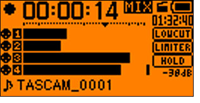 The mixer can take a total of 4 channels from among the four XLR inputs that support phantom power, the stereo mini-jack input and the built-in stereo mic. In addition to adjust pan and input level, this unit also offers a limiter, a five-setting low-cut filter and a delay that can compensate for distances between mics. Moreover, a mid-side decoding function allows the use of two microphones in mid-side configuration.
The mixer can take a total of 4 channels from among the four XLR inputs that support phantom power, the stereo mini-jack input and the built-in stereo mic. In addition to adjust pan and input level, this unit also offers a limiter, a five-setting low-cut filter and a delay that can compensate for distances between mics. Moreover, a mid-side decoding function allows the use of two microphones in mid-side configuration.
High audio quality through HDDA microphone preamps
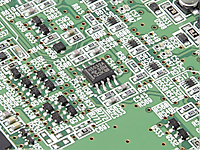 Mic preamps, which receive and amplify microphone input signals, have a large impact on the quality of the recorded audio material. The DR-70D uses Tascam original HDDA (High Definition Discrete Architecture) microphone preamps that we created through careful selection of parts. For example, we chose the NE5532 for the operational amplifier, which has a strong effect on audio quality. With a mic amp circuit that uses discrete architecture comprised of meticulously-chosen parts, we have achieved an equivalent input noise of −120 dBu.
Mic preamps, which receive and amplify microphone input signals, have a large impact on the quality of the recorded audio material. The DR-70D uses Tascam original HDDA (High Definition Discrete Architecture) microphone preamps that we created through careful selection of parts. For example, we chose the NE5532 for the operational amplifier, which has a strong effect on audio quality. With a mic amp circuit that uses discrete architecture comprised of meticulously-chosen parts, we have achieved an equivalent input noise of −120 dBu.
The A/D converter that converts analogue signals to digital is made by Cirrus Logic and is equivalent to those used in our successful DR series of linear PCM recorders. Recording at resolutions up to 96 kHz/24 bit is supported.
Compact and tough design
 The designer of the DR-70D focused on making the unit small so that it does not interfere with camera-work when it is attached to a camera support system or stabilizer. The unit has tripod screw threads on the bottom side and a removable camera attachment screw on its top. A hot shoe mount is also included so you can attach the recorder in the way most convenient for you by placing it between a tripod and the camera or on top of the camera with a hot shoe.
The designer of the DR-70D focused on making the unit small so that it does not interfere with camera-work when it is attached to a camera support system or stabilizer. The unit has tripod screw threads on the bottom side and a removable camera attachment screw on its top. A hot shoe mount is also included so you can attach the recorder in the way most convenient for you by placing it between a tripod and the camera or on top of the camera with a hot shoe.
- Stand adapter (¼ inch) on bottom side to attach the unit to a tripod
- DSLR bracket for easy camera attachment and removal
- Hot shoe mount (accessible when not using the DSLR bracket)
- Handles on the front left and right sides protect the screen and can be used to attach a shoulder belt
Camera input and output
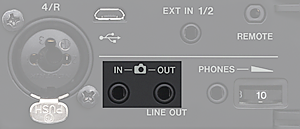 The DR-70D has a camera input jack that can be used to monitor the audio from the DSLR camera. By using this with the DR-70D monitor selection function, you can efficiently monitor the audio from not only the DR-70D but also from the DSLR camera.
The DR-70D has a camera input jack that can be used to monitor the audio from the DSLR camera. By using this with the DR-70D monitor selection function, you can efficiently monitor the audio from not only the DR-70D but also from the DSLR camera.
The camera output jack is designed to output the mixed audio to the camera so that the same audio can be recorded by the DR-70D and the camera. Since the input level varies by camera maker and there are usually few adjustments related to volume on DSLR cameras, this unit has an output volume dial that can be used to make adjustments.
Slate tone generator for easy alignment with video files
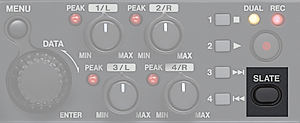 The built-in generator can produce slate tones that can be used as references when aligning audio and video. In addition to being able to produce slate tones when recording starts or when it starts and stops, the SLATE button can be used to add slate tones at any desired point.
The built-in generator can produce slate tones that can be used as references when aligning audio and video. In addition to being able to produce slate tones when recording starts or when it starts and stops, the SLATE button can be used to add slate tones at any desired point.
- Automatic insertion: Choose from inserting a slate tone at the beginning of recording or at both the beginning and end of recording
- Manual insertion: Press the SLATE button to produce a tone.
Features at a glance
- Compact, professional-grade audio recorder designed to be used in combination with a DSLR camera
- Uses an SD/SDHC/SDXC card as recording medium (up to 128 GB)
- High-quality recording inputs through Tascam original High Definition Discrete Architecture (HDDA) microphone preamps
- NE5532 operational amplifiers for even higher audio performance (also used on DA-3000)
- In addition to ordinary stereo recording, simultaneous recording of up to four channels is possible
- Four channels can be mixed down to a stereo signal
- Recording levels can be adjusted independently for inputs 1–4
- Dual recording function allows two files to be recorded simultaneously at different levels
- Recording at 44.1/48/96 kHz, 16/24-bit, linear PCM (WAV format)
- Broadcast Wave Format (BWF) supported as WAV recording format
- Two built-in omnidirectional microphones
- Four XLR/TRS combo inputs can provide phantom power (+24V/+48V)
- +24 dBu maximum input level (20 dB headroom)
- Additional unbalanced input for channels 1 and 2 (stereo mini jack) supports mics that require plug-in power, allowing the input of video mics and other high-output mics
- Switchable low-cut filter conveniently reduces low-frequency noise (40/80/120/180/220 Hz)
- Switchable limiter to prevent clipping
- Audio can be output to a DSLR camera for recording
- Camera input enables convenient monitoring of audio from a DSLR camera
- Selectable mid-side decoding for use with MS microphone setups
- Slate tone functions (automatic/manual) to simplify synchronization of video files when editing
- A new file can be created during recording
- Selectable delay to eliminate time lags caused by differences in the distances of two input sources
- QUICK button allows easy access to various functions
- Slate tones can also be used for moving to specific locations
- Equalizers for playback, and level alignment function to enhance the perceived overall sound pressure
- File name format can be set to use a user-defined word or the date
- Resume function to memorize the playback position before the unit is turned off
- Line output and headphones output with individual level controls (3.5-mm jack)
- Dedicated remote control jack for use with RC-10 and RC-3F (sold separately)
- Hold switch to prevent accidental operation
- Low-noise buttons
- 128 x 64 pixel LC display with backlight
- USB 2.0 port
- Stand adapter (¼ inch) on bottom side to attach the unit to a tripod
- DSLR bracket for easy camera attachment and removal
- Hot shoe mount (accessible when not using the DSLR bracket)
- Handles on the front left and right sides protect the screen and can be used to attach a shoulder belt
- Operates on four AA batteries, an optional AC adapter (Tascam PS-P520U), optional external battery pack Tascam BP-6AA (discontinued) or USB bus power
Specifications
| General | |
|---|---|
| Recording media | SD cards (64 MB – 2 GB) SDHC cards (4–32 GB) SDXC cards (48–128 GB) |
| Recording/playback formats | WAV: 44.1/48/96kHz, 16/24-bit BWF: 44.1/48/96kHz, 16/24-bit |
| Number of channels | 4 maximum (stereo × 2) |
| Analogue audio inputs and outputs | |
|---|---|
| 1/L, 2/R, 3/L, 4/R | XLR-3-31, 6.3-mm standard TRS jack (can provide phantom power) |
| EXT IN 1/2 | 3.5-mm stereo mini jack (can provide plug-in power) |
| IN | 3.5-mm stereo mini jack |
| PHONES | 3.5-mm stereo mini jack |
| OUT/LINE OUT | 3.5-mm stereo mini jack |
| Other inputs and outputs | |
|---|---|
| USB port | Micro-B connector |
| Format | USB 2.0 HIGH SPEED mass storage class |
| REMOTE input | 2.5-mm TRS jack |
| Audio performance | |
|---|---|
| Frequency response (LINE IN or MIC IN to LINE OUT, JEITA) | 20 Hz – 20 kHz +0.5/−2 dB (Fs 44.1/48 kHz) 20 Hz – 20 kHz +0.5/−3 dB (Fs 96 kHz) |
| Distortion (LINE IN or MIC IN to LINE OUT, JEITA) | 0.02 % or less (Fs 44.1/48/96kHz) |
| S/N ratio (LINE IN or MIC IN to LINE OUT, JEITA) | 92 dB or more (Fs 44.1/48/96kHz) |
| Equivalent input noise (EIN) | −120 dBu or less |
| Figures are based on JEITA CP-2150 |
| Recording times (4-GB SDHC card, hours: minutes) | |
|---|---|
| WAV/BWF 16 bit/44.1 kHz (stereo) | 6:44 |
| WAV/BWF 24 bit/96 kHz (stereo) | 2:04 |
| The recording times shown above are estimates. They might differ depending on the SD/SDHC/SDXC card in use. The figures reflect the total possible recording time for the specified card. If recorded in mono WAV format, the maximum recording time will be double the figures above. When using dual/4-channel recording in WAV/BWF format, the maximum recording time will be about half the figures above. |
| Power supply and other specifications | |
|---|---|
| Power | 4 AA batteries (alkaline or NiMH) USB bus power from a computer AC adapter (TASCAM PS-P520U, sold separately) External battery pack (TASCAM BP-6AA, sold separately) |
| Power consumption | 5 W (maximum) |
| Dimensions (W × H × D) | 169 mm × 55 mm × 107 mm (with top adapter attached) |
| Weight | 625 g (including batteries) 530 g (excluding batteries) |
| Operating temperature range | 0–40 °C |
| Approximate battery operation time (continuous operation, hours:minutes) | |
|---|---|
| Alkaline batteries (EVOLTA) | |
| 2-ch recording, WAV format, 44.1kHz/16-bit | 6:00 (XLR/TRS input selected, phantom power not used) 11:00 (MIC input 3/4 selected) |
| NiMH rechargeables (eneloop) | |
| 2-ch recording, WAV format, 44.1kHz/16-bit | 6:15 (XLR/TRS input selected, phantom power not used) 10:30 (MIC input 3/4 selected) |
| NOTE: When using phantom power, the operation time might be reduced depending on the mic being used. |
Design and specifications subject to change without notice.
Page last modified: 2025-11-06 19:07:59 UTC




